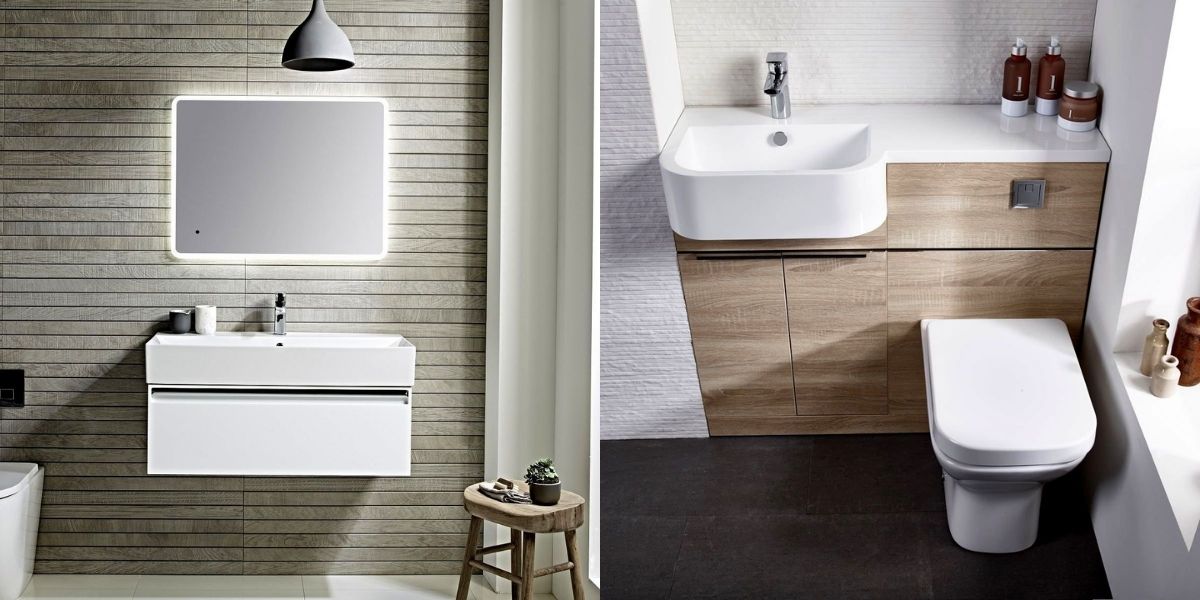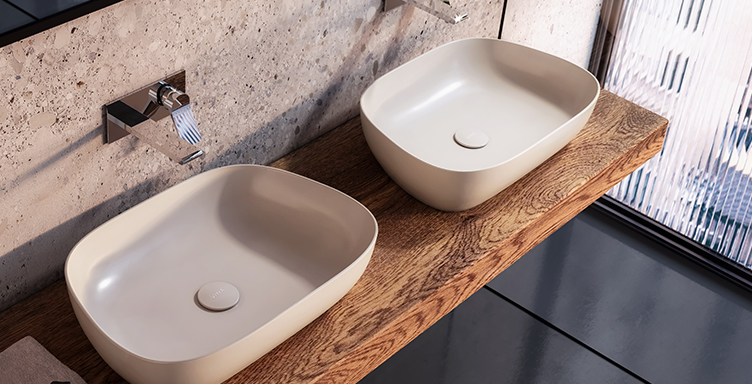Smart Spending
Discounts That Scale With You
Premium Brands
Quality You Can Trust
Express Options
1 - 3 Days Delivery
Exceptional Service
Your Bathroom Experts
Get the Japandi look in your bathroom
East meets west in one of the current bathroom trends “Japandi”. Interior designers across the globe are loving the shared focus of simplicity and functionality from Japan and Scandinavia. These two may be miles apart but they are leading the way in bathroom design.
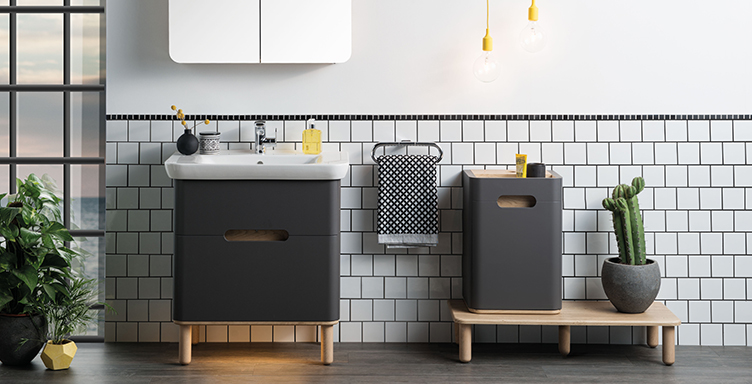
Japanese and Scandinavian styling
Millions of home owners are now wanting to create their own spa like bathroom and the natural hot springs and bathing solutions found throughout Japan offer inspiration with their tranquil, peaceful and zen-like settings.
Scandinavia or ‘Scandi’ style bathrooms with their minimalist, sleek and functional offering have also become hugely popular across the globe, influence aided by the likes of IKEA and a flurry of crime dramas!
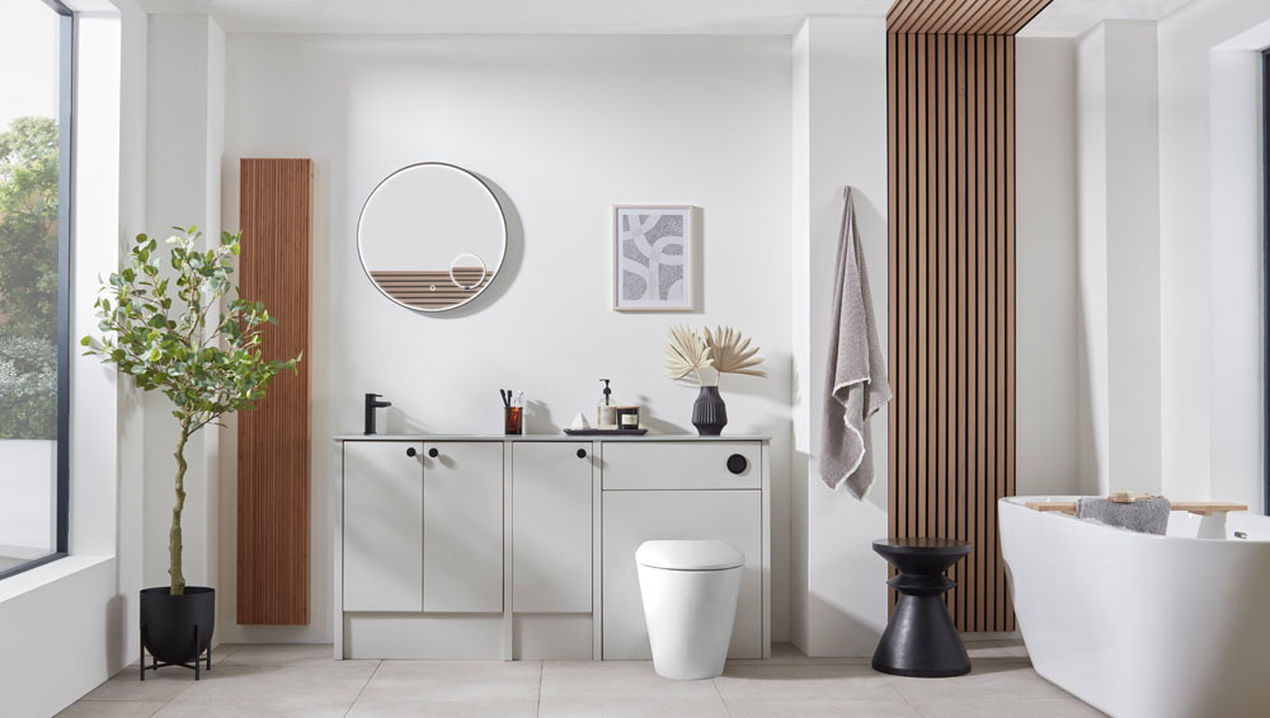
With obvious differences the two styles still have plenty in common. Both Scandi and Japanese styling make use of natural, organic materials and textures and this results in a beautifully simplistic, contemporary look.
What is Japandi?
Japandi is basically a fusion of styles from Japan and Scandinavia. To really understand this fusion of styles we need to look at three concepts.
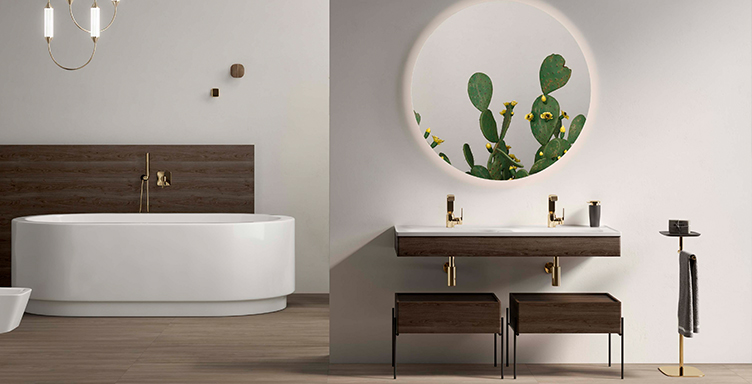
The first of these concepts is wabi-sabi. Wabi-sabi is a Japanese term which translates as ‘finding the beauty in imperfection’. Finding beauty in natural forms that are far from perfect such as rocks, stone and wood.
Lagom is the second concept, coming from the Swedish proverb “Lagom ar bast” which translates as “just enough”. If you think of the English saying “less is more” you are on the right track. Basically the space that you live in shouldn’t be cluttered with ‘things’ or overdone with lots of colour. Lagom means keeping it simple and clutter free.
The third and final concept (and possibly the most important) is hygge. Hygge is a Norwegian/Danish word that does not really have a simple translation into English. Hygge is more of a feeling that you get when you are comfortable, cosy and settled. Picture the rain battering down outside, yet you are soaking in a lovely warm bath with lots of bubbles, your candles are lit and downstairs your log burner is burning brightly whilst your black Labrador is asleep on the rug…. That feeling is hygge. Scandi style is built on hygge. In a region where the weather can be cold and harsh, it’s very important that your home exudes happiness, warmth and wellbeing.
Japanese and Scandinavian design similarities
Both cultures produce simple yet minimalistic furniture and place huge value on skilled workmanship and quality. Both are renown for the use of natural organic materials and for using neutral colours in interior design with natural hues being favoured. Bold is not a word used to describe either of the interiors evolving from these two regions of the world.
Features of Japandi styling
Organic materials are a prominent feature in Japandi style along with the use of natural colours. Simple, uncluttered styling and simple, minimalist furniture provide a harmonious peaceful design. Japandi style is also sustainable, items are built to last with very often crafted, functional products at the very heart of the concept.
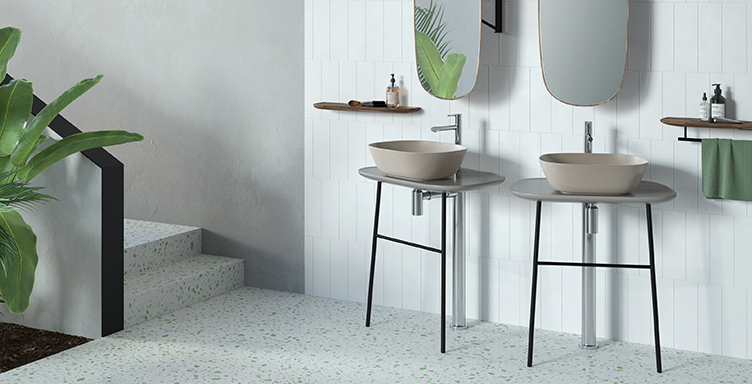
Japandi style is one of harmony, tranquility and relaxation – all the things you need to get rid of the stress after a hard day and exactly what you need for your new bathroom.
How can I get the Japandi look in my bathroom?
Japandi is a style that’s just as easy to get wrong as it is to get right. So we’ve put together some top tips to help you. Don’t forget to keep it simple, think of the function of the room, think of the quality and durability of your fixtures and fittings and be careful with the use of colour:
- Add plants for a natural feel
- Use low-key ambient lighting
- Keep lines clean and simple
- Use soft, neutral hues
- Use natural, organic materials such as stone, granite and wood
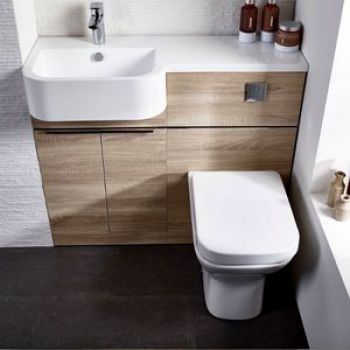
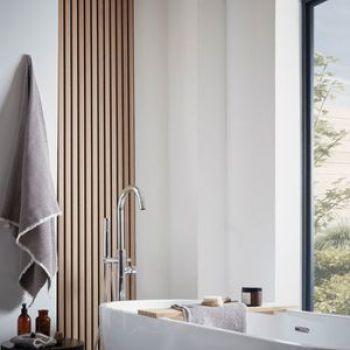
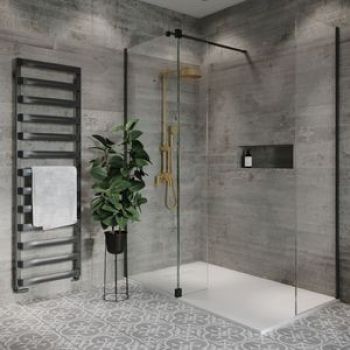
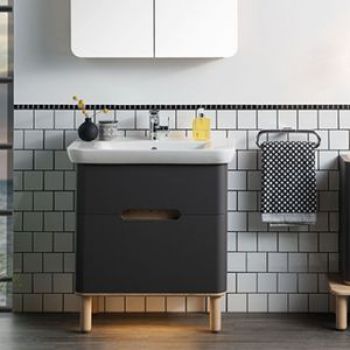
What features work best in a Japandi bathroom?
The focal point should be your bath, choose a freestanding simple model such as the Divita Freestanding Cian Bath from BC Designs. Then consider your shower area, this should be functional yet still stylish. Think minimal, calm and try to incorporate those natural elements. A balance of light and dark contrast work really well in achieving a Japandi styling.
Stone effect tiles will also give you that calming earthen design and will also keep your shower area clean and simple. Or opt for a light and airy look with super simple white tiles and black fixtures including your shower valve. Choose a black framed shower panel such as the Crosswater Design 8 Matt Black Walk In Shower Panel.
Other elements of Japandi can then be introduced such as the use of timber. This introduces texture as well as natural materials and the Crosswater Arena 1000mm Wall-Hung Vanity Unit in Modern Oak finish is a great option.
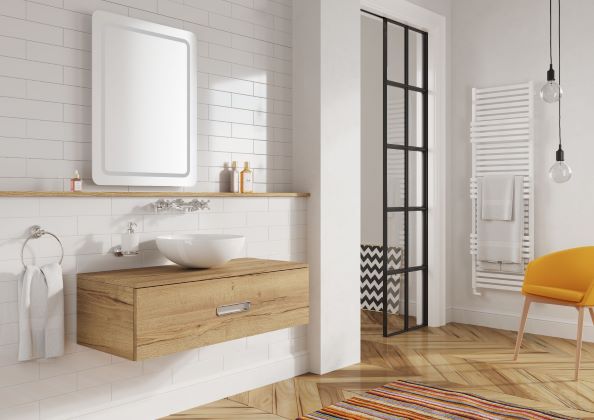
For a pure minimalist style opt for a wall hung toilet. The Villeroy and Boch Antheus Wall Hung Rimless WC works perfectly in achieving a Japandi style with its clean modern lines. This toilets rimless bowl technology eliminates the rim from the inside of the toilet bowl, thanks to the newly developed flush type. This means not only does the toilet look more aesthetically pleasing but there is a huge benefit in hygiene as the rimless bowl is 95% more hygienic than a normal toilet bowl. There is nowhere for germs to hide!
Japandi accessories in a bathroom
Keep accessories to a minimum and keep colours for towels and toiletries to neutral hues.
Why is Japandi a popular design choice for bathrooms?
Japandi brings the best of Scandinavian simplicity and Japanese functionality to your bathroom. It’s clean, non-messy design, use of contrasting colours and natural materials and added textures are perfect for any modern, contemporary bathroom space whether in an apartment or a family home.
Best buys
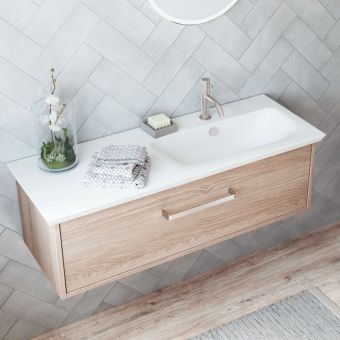 Approved RetailerCrosswater Arena 1000mm Wall-hung Vanity Unit in Four Colours£817.60 inc. VATA vanity unit with elegant lines creating a stylishly sleek design to your bathroom offering plenty of space
Approved RetailerCrosswater Arena 1000mm Wall-hung Vanity Unit in Four Colours£817.60 inc. VATA vanity unit with elegant lines creating a stylishly sleek design to your bathroom offering plenty of space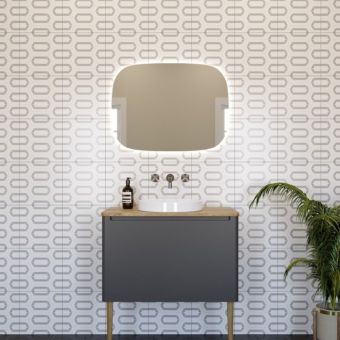 Approved RetailerCrosswater Artist 800mm Wall Mounted Unit with Solid Oak WorktopFrom £1193.55 inc. VATOriginal, simple, and clean. Onyx Black, Cashmere Matt, Storm Grey matt, and Matt White are the four finishes available ...
Approved RetailerCrosswater Artist 800mm Wall Mounted Unit with Solid Oak WorktopFrom £1193.55 inc. VATOriginal, simple, and clean. Onyx Black, Cashmere Matt, Storm Grey matt, and Matt White are the four finishes available ...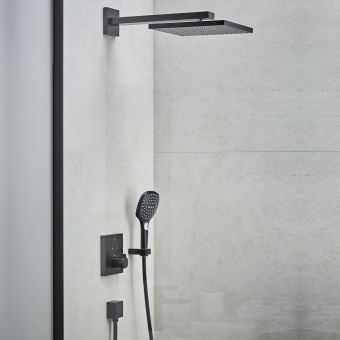 hansgrohe ShowerSelect Square Shower Set with 300 Overhead and Handshower in Matt Black - 88102087£3004.96 inc. VAThansgrohe Finish Plus Matt Black Shower set with Square Select, concealed valve with Raindance (300) overhead and Select...
hansgrohe ShowerSelect Square Shower Set with 300 Overhead and Handshower in Matt Black - 88102087£3004.96 inc. VAThansgrohe Finish Plus Matt Black Shower set with Square Select, concealed valve with Raindance (300) overhead and Select...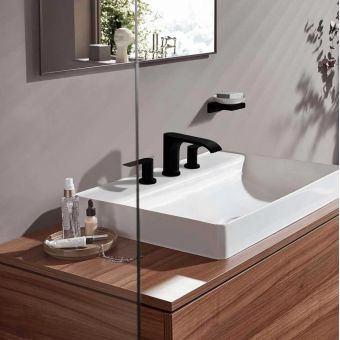 hansgrohe Vivenis 3 Hole Basin Mixer 90 with Pop-up Waste Set in Matte Black - 75033670£489.96 inc. VATA high quality basin set that will blend perfectly into any bathroom. Includes waste set.
hansgrohe Vivenis 3 Hole Basin Mixer 90 with Pop-up Waste Set in Matte Black - 75033670£489.96 inc. VATA high quality basin set that will blend perfectly into any bathroom. Includes waste set.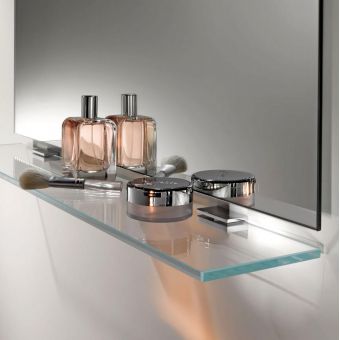 Keuco Moll Glass Shelf With Brackets - 12710015500From £117.36 inc. VAT500, 650, 800, 1000 and 11300mm widths complete with mounting brackets
Keuco Moll Glass Shelf With Brackets - 12710015500From £117.36 inc. VAT500, 650, 800, 1000 and 11300mm widths complete with mounting brackets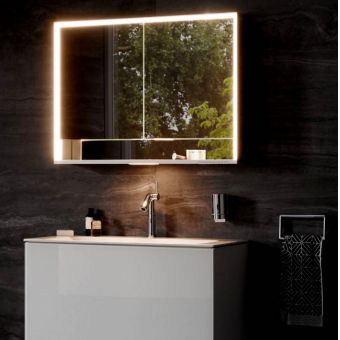 Keuco Royal Lumos Mirror Cabinet - 14302171331From £2012.40 inc. VATFront mounted sensor touch controls
Keuco Royal Lumos Mirror Cabinet - 14302171331From £2012.40 inc. VATFront mounted sensor touch controls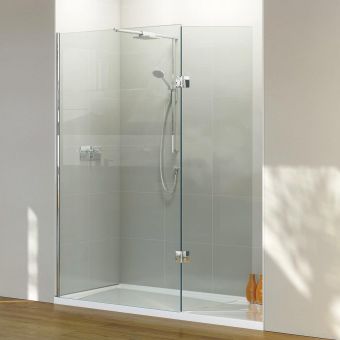 Matki Boutique Panel with Return for Recess with Integrated Tray - NWSRFrom £1554.00 inc. VATWalk-in shower with a main panel and a return in either hinged or fixed style, for a recess between 2 walls.
Matki Boutique Panel with Return for Recess with Integrated Tray - NWSRFrom £1554.00 inc. VATWalk-in shower with a main panel and a return in either hinged or fixed style, for a recess between 2 walls.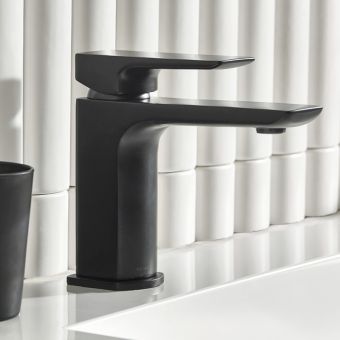 Roper Rhodes Elate Black Basin Mixer Tap - T241103£256.00 inc. VATBlack basin mixer tap with matching black click-clack waste. Single lever design and ceramic disc technology.
Roper Rhodes Elate Black Basin Mixer Tap - T241103£256.00 inc. VATBlack basin mixer tap with matching black click-clack waste. Single lever design and ceramic disc technology.

